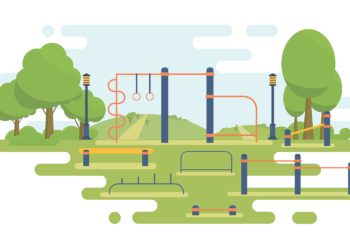Building a track and field complex, multipurpose field or sport court is a costly undertaking, but with proper initial planning and maintenance, the investment can maintain its’ quality and functionality for many years.
There are several things to consider regarding the design and construction of running tracks and sports fields, but one aspect that will ensure track longevity and performance is addressing the need to evacuate water and keep debris off the track surface. Damage is caused by standing water or “ponding”, particularly in colder climates where the water can freeze, wreaking havoc on an expensive track surface. Add water run-off from the surrounding areas that bring debris and pollutants, and the rate of surface deterioration increases. A track left with standing water over time causes major damage to the surface, delaminating the synthetic surface and asphalt base and severely shortening its usable life.
A problem area where water builds up on most tracks is at the furthest inside lane where the track meets the field surface, typically caused by a slope towards the inside lane. If the infield also has a slope towards the track surface, water is likely to pond in this area. This ponding could cause a safety issue for athletes as they cross from the field to the track and is an area to pay special attention to.
Effective drainage is critical in the design and construction of any athletic facility. Proper drainage can reduce rain delays, improve conditions for runners, coaches and spectators, reduce maintenance costs and extend the life and performance of the running track or field surface.
A trench drain solution provides effective drainage without the need to construct complex slopes and can provide a continuous barrier to protect the running track from contaminated run-off from the in-field or surrounding areas. A high-quality, modular drainage product will allow for easier installation, while maintaining strict site tolerances that are required for running tracks.
While a variety of materials are available for trench drainage products for tracks and fields, it is important to consider a material that will maintain the tight tolerances required when building a track. Polymer concrete is a rigid inert material that has good long-term durability, low permeability to water and will maintain tight tolerances. Compared to other HDPE trench drain materials, trench drains made of polymer concrete do not expand significantly more than the concrete surround during large temperature changes and they have excellent compressive and flexural strength.
For the area where the inside track lane meets the infield surface and water collects, a drainage system that offer a safety edge, or integrated cellular rubber top, will help keep athletes safe as they transition from the field to the track.
Jaclyn Revis is the marketing services manager for ACO Polymer Products, Inc., a leader in the design and manufacturing of ACO Sport polymer concrete trench drainage for athletic facilities and other applications, with manufacturing and sales facilities worldwide.










